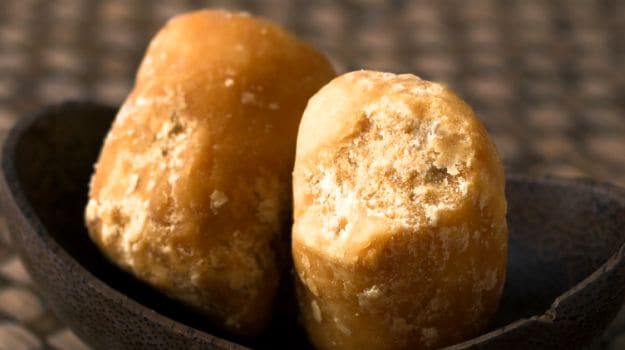Jaggery is a sweetener that's becoming popular as a "healthy" replacement for sugar.
What's more, this sweetener has been given a serious health halo.
It's often referred to as a "superfood sweetener."
Jaggery is an unrefined sugar product made in Asia and Africa.
It's sometimes referred to as a "non-centrifugal sugar," because it's not spun during processing to remove the nutritious molasses.
Similar non-centrifugal sugar products exist all over Asia, Latin America and the Caribbean, although they all have different names (1).
These products include:
- Gur: India.
- Panela: Colombia.
- Piloncillo: Mexico.
- Tapa dulce: Costa Rica.
- Namtan tanode: Thailand.
- Gula Melaka: Malaysia.
- Kokuto: Japan.
About 70% of the world's jaggery production takes place in India, where it is commonly called "gur."It has been a traditional food there and was popular more when there was no refined sugar.(White sugar )
It's most often made with sugar cane. However, jaggery made from date palm is also common in several countries (2).In south Indian ,Kerala state is known for Gud Candies derived from dates sugar and all sorts of colored sweets .
BOTTOM LINE:Jaggery is a type of unrefined sugar made from sugar cane or palm. Much of the world's production takes place in India.
Jaggery is made using traditional methods of pressing and distilling palm or cane juice. This is a 3-step process (3):
- Extraction: The canes or palms /dates are pressed to extract the sweet juice or sap.
- Clarification: The juice is allowed to stand in large containers so that any sediment settles to the bottom. It is then strained to produce a clear liquid.
- Concentration: The juice is placed in a very large, flat-bottomed pan and boiled.
During this process, the jaggery is stirred and the impurities are skimmed off the top until only a yellow, dough-like paste remains.
This "dough" is then transferred to molds or containers where it cools into jaggery, which looks something like this:

The color can range from light golden to dark brown. This is important, since the color and texture are used to grade the jaggery.
Interestingly, Indians value lighter shades more than darker ones.
This lighter, "good quality" jaggery generally contains more than 70% sucrose. It also contains less than 10% isolated glucose and fructose, with 5% as minerals (4).
It is most often sold as a solid block of sugar, but it's also produced in liquid and granulated forms.
BOTTOM LINE:Jaggery is made by evaporating the water from sugar cane juice or palm sap. It is sold as a block, liquid or granules.

Hey, I even have looking your article and that helped me to put in writing my article about golden delicious apple nutrition you want to have a test on my article.
ReplyDelete